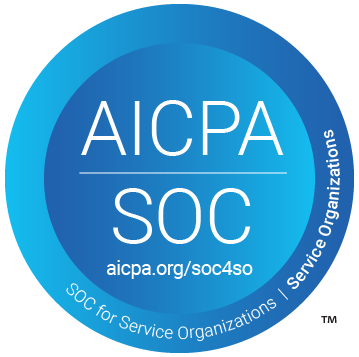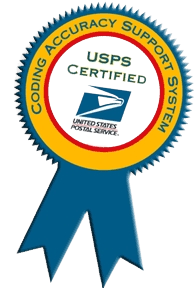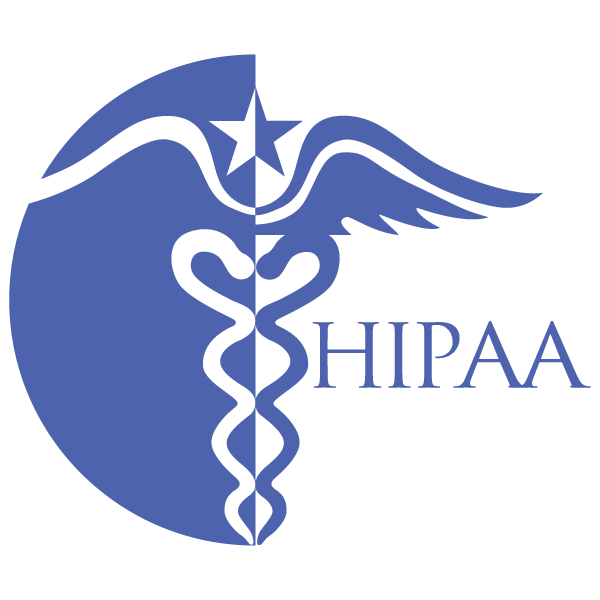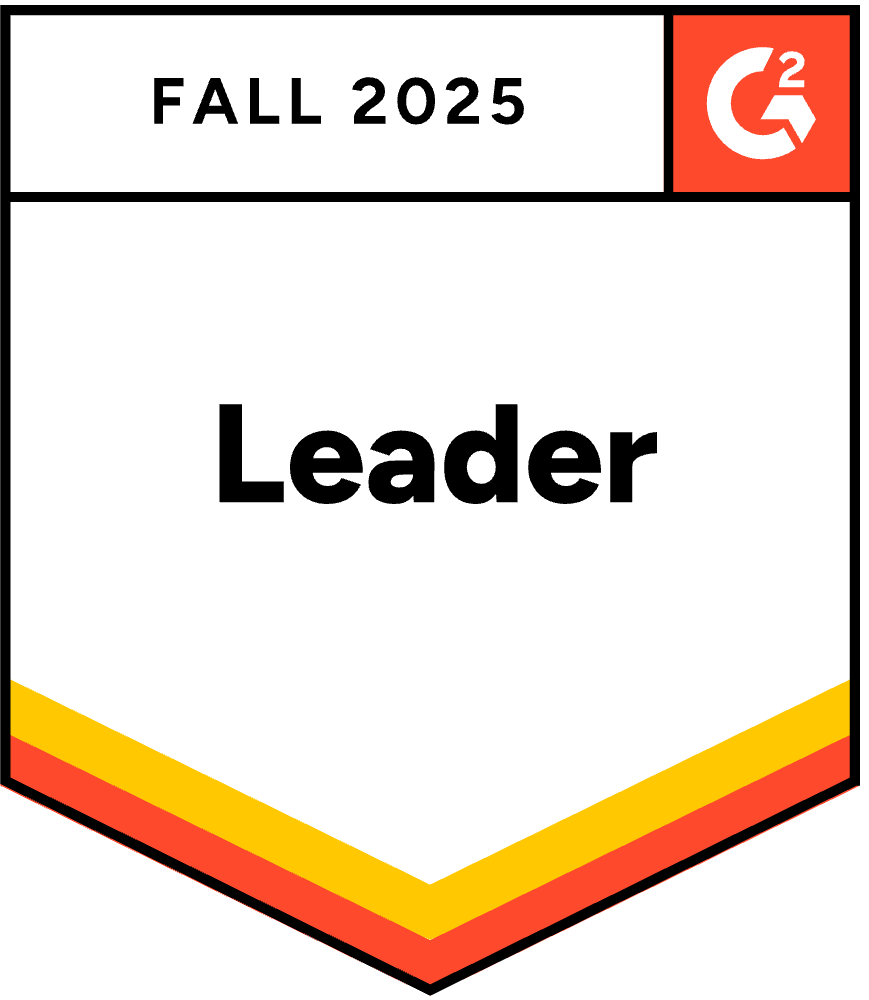This guide provides a comprehensive overview of Canada address formatting, postal code structures, and localization practices. It includes information on postal services, languages, time zones, and address validation standards across Canada.
Address Format
Address Format: English
- Organization
- PremisesNumber Thoroughfare ThoroughfarePostDirection SubPremisesType SubPremisesNumber
- Locality AdministrativeArea PostalCode
- Country
PostBox Address Format: English
- Organization
- PostBoxType PostBoxNumber
- Locality AdministrativeArea PostalCode
- Country
Address Format: French
- Organization
- PremisesNumber Thoroughfare ThoroughfarePostDirection SubPremisesType SubPremisesNumber
- Locality AdministrativeArea PostalCode
- Country
PostBox Address Format: French
- Organization
- PostBoxType PostBoxNumber
- Locality AdministrativeArea PostalCode
- Country
Address Verification Data
Canada postal addresses verification data
| Available: | Yes |
| Does the country use Postal Codes: | Yes |
| PO Box Indicator: | PO Box |
| ISO-2-Code: | CA |
| ISO-3-Code: | CAN |
| Phonecode: | 1 |
Address Example
Address Format English:
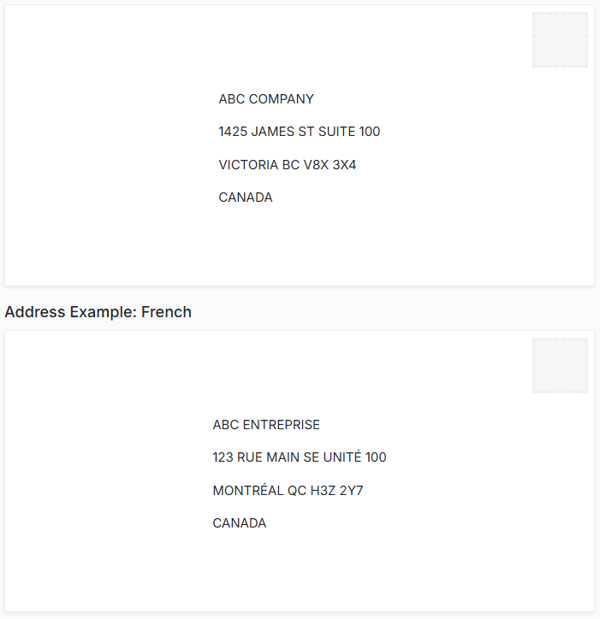
Country Info
Full Country Name: Canada
| Country Alpha-2 code | CA |
|---|---|
| Country Alpha-3 code | CAN |
| Numeric Code | 124 |
Timezone
Canada spans six main time zones:
| Time Zone | UTC | DST |
|---|---|---|
| Pacific Time (PT) | UTC-8 | UTC-7 |
| Mountain Time (MT) | UTC-7 | UTC-6 |
| Central Time (CT) | UTC-6 | UTC-5 |
| Eastern Time (ET) | UTC-5 | UTC-4 |
| Atlantic Time (AT) | UTC-4 | UTC-3 |
| Newfoundland Time (NT) | UTC-3:30 | UTC-2:30 |
Daylight Savings Time is observed in most provinces and territories except for Saskatchewan (which stays on CST year-round) and parts of British Columbia.
Official Language
Canada has two official languages at the federal level: English and French
Fun Fact
- Canada ranks among the highest globally for life expectancy (about 82 years). (CIA)
- Much of its huge landmass is sparsely populated; inhabitants cluster near the U.S. border.
- Canada is the second-largest country in the world by total area (after Russia). (CIA)
- It has the longest coastline of any country: about 202,080 km (125,567 miles). (Kids World Travel Guide)
- More than 3 million lakes are in Canada. It has more lakes than any other country, furthermore over 50% of the world’s lakes are in Canada. (Kids World Travel Guide)
- About 90% of the Canadian population lives within ~160 km (100 miles) of the U.S. border. (Kids World Travel Guide)
- Poutine, the dish of fries topped with cheese curds and gravy, is a well-known comfort food that originated in Quebec. (Travelsphere)
- The country experiences vast climatic extremes. For instance, in Yukon, the temperature once dropped to −63 °C (−81.4 °F) in the winter. (Travelsphere)
Postal Authority
The Canada Post Corporation (Société canadienne des postes) is the national postal service. It provides domestic and international mail and parcel delivery, logistics solutions, and digital communication services. Canada Post operates an extensive network of post offices, ensuring universal delivery to all provinces and territories, including remote northern regions.
Reference: https://www.canadapost-postescanada.ca
Postal Data & Certification
CanadaPost offers a variety of data solutions to end users as well as solution providers like Melissa. The most prominent is their Software Evaluation and Recognition Program (SERP) certification, which evaluates vendors address validation process and results.
SERP Vendors must use the official POCAD (Point of Cal Address Data), which is CanadaPost’s highest quality and most granular data. Additionally, Vendors must be able to generate a Statement of Accuracy statement.
Alternatively, CanadaPost also has less granular data like PCAD (Postal Code Address Data) and Postal Code only data files.
Being a SERP Certified Vendor, Melissa offers the highest quality solution available.
Postal Code Format
In Canada, postal codes consist of 6 alphanumeric characters following the pattern Letter-Number-Letter, space, Number-Letter-Number (LNL NLN). The first letter represents a specific geographic region or province, while the remaining characters narrow down to a city block, building, or a specific rural area. Postal codes are always written in uppercase and placed to the right of the locality name.
Example:
M5V 3L9
Name Conventions
Population Names
In Canada, names are both English/Latin, and French/Latin in the western naming format:
[opt: title / honorific] [given name] [opt: middle given name(s)] [FAMILY NAME] [opt: suffix / post nominal]
-Mr. John Smith MD
-Professeur Jacques BOUCHARD-ROY
-Jean-Luc & Léa Gagnon
Canada is officially bilingual (English and French), and naming customs reflect both linguistic traditions. English-speaking Canadians typically follow Anglo naming patterns, while French-speaking Canadians—particularly in Quebec—may include compound or hyphenated surnames.
Names may include French accents (e.g., É, è, à) and are legally recognized. Titles (Mr., Dr., Prof.) and professional post-nominals (e.g., MD, PhD, CPA) are commonly used. Traditional naming is patrilineal, though increasingly flexible laws allow for a variety of surname arrangements for spouses and children.
Organizational Names:
Business names in Canada must include a legal entity designation depending on the province and type of incorporation. Common suffixes include:
- Inc. (Incorporated)
- Ltd. (Limited)
- ULC (Unlimited Liability Corporation)
- SARF, SCC, and NT may also appear in certain jurisdictions or sectors.
French equivalents such as Ltée. (Limitée) are also used, especially in Quebec.





